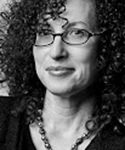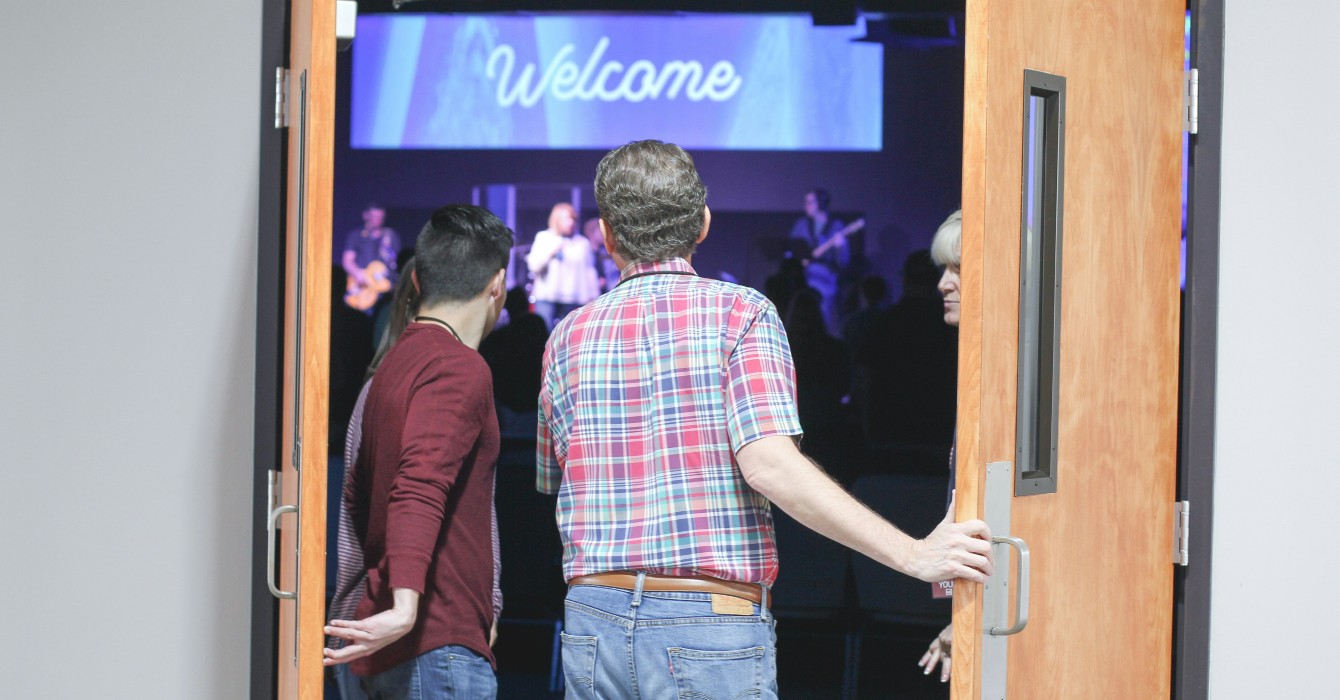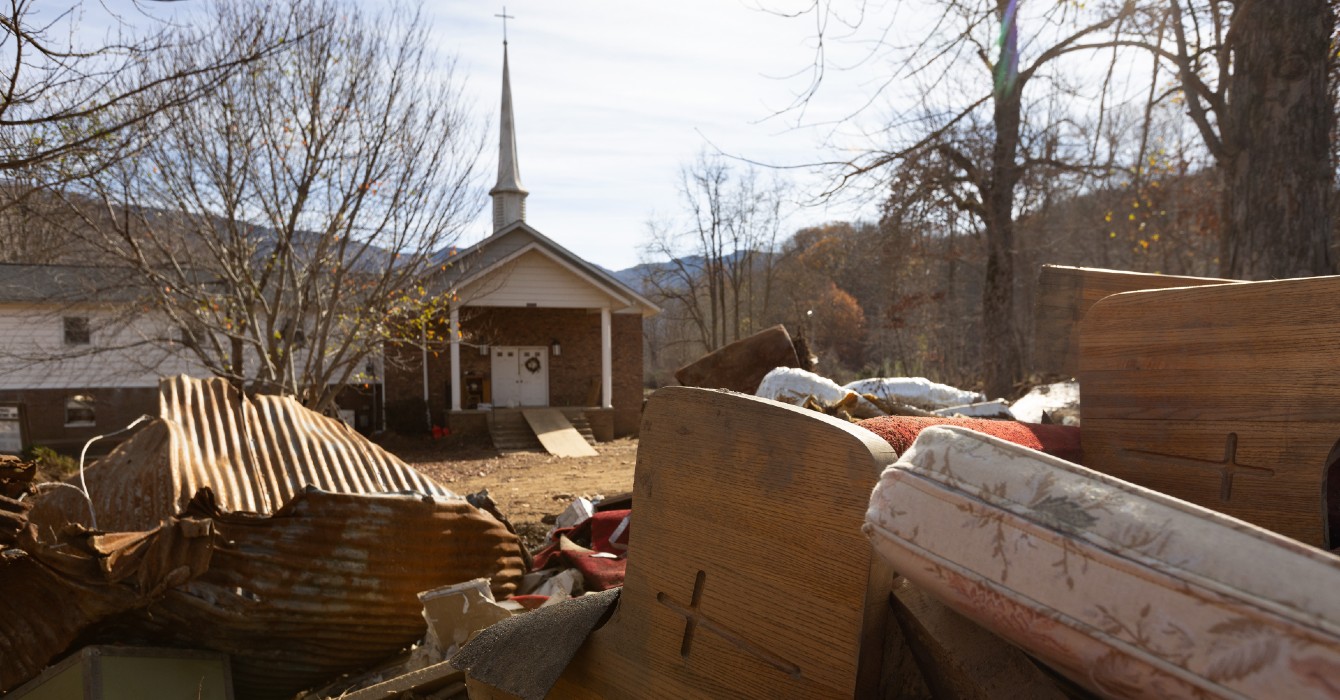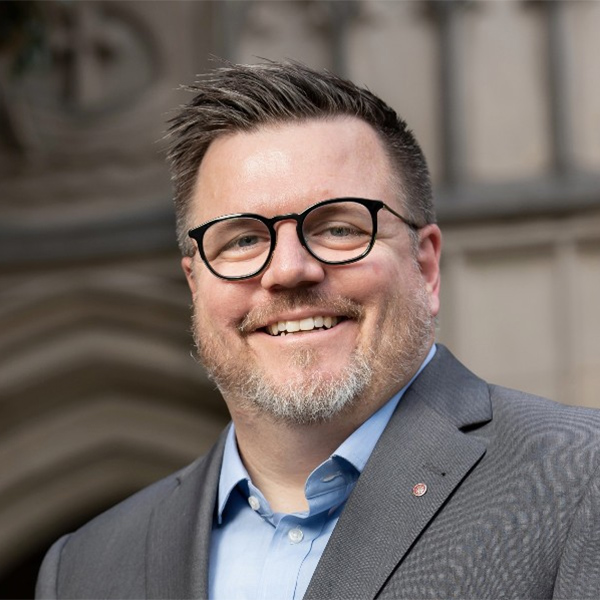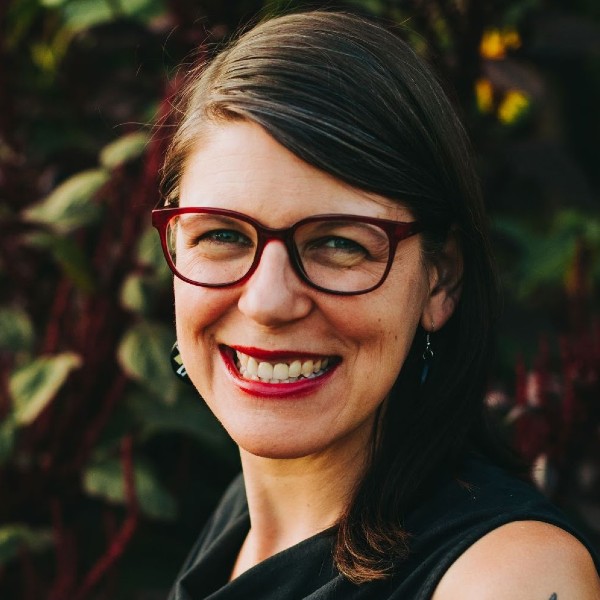When St. John’s Compton Presbyterian Church on the outskirts of Los Angeles closed in the late 1960s, the mostly white congregation designated a portion of its residual funds for a black church to be planted in Orange County someday.
“Someday” came nearly 40 years later in the form of New Hope Presbyterian Church in Orange, California. It’s headed by the Rev. Chineta Goodjoin, a native of South Carolina who brought to California her unique vision of what the church could be.
New Hope is known for its music, but that’s just part of the church’s mission, which has expanded during the nine years of Goodjoin’s ministry to respond to the needs of the diverse communities it serves in dynamic and creative ways.
In addition to hosting an annual benefit concert to raise money for a local public school that lost its music program, the congregation is working to address social justice issues, from gun violence and racial reconciliation to economic stewardship.
What are your organization's core gifts and talents? How can they be used to connect with the community?
Goodjoin wanted to get to know the community and figure out the community’s needs -- and help meet those needs.
“My focus is not on bucks in the plates and butts in the seats,” she said. “My focus is, ‘But, God, how can we help these people? But God, what do we do with our gifts and talents so that those around us know that they matter?’ …

“What is ‘church,’ and what is ‘building the church’? I believe that building the church is where you build relationship within the community -- one person by one person by one person. And that’s what we do,” she said.
New Hope is a beacon to other congregations and communities, said the Rev. Tom Cramer, the leader for vision and mission for the Presbytery of Los Ranchos, Presbyterian Church (U.S.A.). New Hope “causes us to pay attention to dynamics in our society and culture that are present everywhere -- maybe not immediately in many of our neighborhoods, but there’s a real need for attention in our society at large,” Cramer said.
“They are prophetic in what they call us to do, and I think we’re all grateful,” he said.
Widening the aperture of people’s minds
New Hope began its quest with music.
Goodjoin’s husband, Reggie, a professional musician and the church’s music director, called on his contacts in Orange County and neighboring Los Angeles to sit in with the New Hope church band as guest musicians at monthly worship services.
“They were all African-American, classically trained musicians who understood church, African-American church,” Chineta Goodjoin said. “They were all people who played Eurocentric instruments but could use them in various ways. So we had black cellists, black flautists, all of these different musicians coming every month. And word got around.
How can members’ networks be a resource for your congregation?
“I remember Reggie saying once to the harpist, ‘We’re going to start this song out classically, and in the last stanzas, we’re going to break it down to gospel. You can do that, right?’ And she was like, ‘Oh yeah.’… By June or July [that first year], the band could do anything it wanted musically, and it was drawing people into the church.”
The music helped build the community from the ground up, widening the aperture of people’s minds about what is “acceptable and what is good” culturally and spiritually, Goodjoin said.
“We realized that we needed to break down stereotypes of African-American church. People have, for whatever reason, this Pentecostal-shouting-tambourines image. That’s what they see in the movies,” Goodjoin said.
What does “acceptable” worship look like to you and people at your church? Could you broaden their vision of worship?
“We needed to dismantle the movie mindset so that people could come to see and know that clapping hands, raising hands, standing up and singing, shouting to the Lord is real, relevant to the worship experience, and has its place in giving God praise and honor and glory. And it has its place at New Hope.
“Before you know it, people who had never shouted or clapped in church in their lives found themselves shouting and clapping at New Hope. … And [the music] continues to connect us with the diversity of God’s community.”
After a year of monthly worship services, they became twice-monthly, and by 2010, New Hope was holding weekly worship.

An African-American church in Orange County
Around 2001, Marionette Oliver, an African-American member of the Presbytery of Los Ranchos nominating committee, noticed a curious item in the presbytery’s budget marked “the black fund” and decided to investigate, Goodjoin said.
Oliver discovered that money from the mostly white former St. John’s Compton church had been set aside for an African-American church plant in an interest-bearing account. It had accrued over the intervening 30 years to nearly $500,000.
After several years of discerning how best to use the funds to serve Orange County’s African-American community, the presbytery in 2007 called Goodjoin to be pastor of the church plant in historic Orange, a small city situated relatively centrally in its eponymous county.
“The original intent was to plant an African-American church in Orange County, which is interesting. I’m going to have to have a talk with God about that,” Goodjoin said, joking. “There is no ‘black neighborhood’ here, so where am I supposed to draw people from? It’s just diverse. What we have, really, is a regional church in a little town.”
Does New Hope change your understanding of “community” and “neighborhood?”
Orange County, known as “the OC,” is predominantly white but has robust Hispanic and Asian populations. As of 2014, African-Americans constituted just 2.1 percent of the county’s more than 3 million residents. The OC is also among the most affluent communities in the nation, but there are pockets of poverty -- 12 percent of Orange County residents live on incomes that fall below the poverty line.
New Hope’s congregation of about 100 souls hails from all over Orange and Los Angeles counties, some traveling more than 50 miles to worship with New Hope, which meets in the sanctuary of First Presbyterian Church of Orange.
About 40 percent of the New Hope congregants are African-American, 40 percent are white, and 20 percent Asian, Hispanic or mixed-race.
For Goodjoin, Orange County was new territory. A native of Gaffney, South Carolina -- known in pop culture as the birthplace of fictional President Frank Underwood in “House of Cards” -- Goodjoin earned bachelor’s and master’s degrees in speech-language pathology from South Carolina State University.
A lifelong believer active since childhood in her home church, she worked for a dozen years as a speech pathologist in the Cherokee County, South Carolina, school district before she heard God’s call to ordained ministry.
“One day I realized I had organized my case files according to who didn’t have a ride to church, who didn’t have a church, who I needed to call about church -- the whole caseload was organized around church,” Goodjoin said.
“I came home and told Reggie that it was something I couldn’t ignore, and he said, ‘Chineta, let’s just do it.’”
A year later, she was enrolled in the Johnson C. Smith Seminary of the Interdenominational Theological Center in Atlanta, from which she graduated in 2004.
Now 48, Goodjoin was called to New Hope nine years ago from L.A.’s Knox Presbyterian Church -- her first assignment after being ordained by the PCUSA in 2005.
From the beginning, the presbytery encouraged Goodjoin and New Hope to try something innovative.
“The presbytery said in the beginning, “If you do this, please be authentic to your call and be authentic to your culture. Please don’t try to impress us by creating or reduplicating ‘Main Street Presbyterian Church,’” Goodjoin said.
“That was probably the tipping point for me to say yes to doing this. Because it gave me free rein and freedom to hear what God is saying and to do -- and not get repercussions or judgments like, ‘Wait, you’re not using the blue hymnal?’”
And Goodjoin has risen to the opportunity, said Cramer, of the Presbytery of Los Ranchos.
New Hope “poses a challenge to staid, settled, tired congregations or communities, because of how they maximize their people power,” he said. “What they constantly do is to say, ‘Whatever you have, use it for something greater, something better’ -- and that you can make a lot out of a little.”
New Hope brings music education to schoolchildren
The New Hope congregation’s vibrant musical life, which was drawing folks to the burgeoning faith community, led Goodjoin and church leadership to ask, “How can we better use this giftedness?”
In early 2008, they approached a school district in Santa Ana, about 10 miles away, and learned that Willard Intermediate, one of the most impoverished schools in the district, had lost funding for its music programs five years earlier.
“Music is vital to education, so we did an inventory of their music room -- closet is more like it -- and there were instruments that [looked to be] 40 or 50 years old, torn-up, dusty and obviously untouched,” Goodjoin said.
New Hope began to raise money for Willard’s music programs and to raise awareness about the need for music education.
Reggie Goodjoin called on friends in L.A. to perform at concerts in the school on special occasions such as the day before midterm exams or standardized testing to get the students pumped up. The church brought in professional musicians to put on percussion clinics and teach occasional music classes after school.
In 2009, New Hope decided to host a benefit concert to raise money for new instruments at Willard.
“People from the Hollywood music community came, and they’ve come every year since,” Goodjoin said.
The Hope Alive annual benefit concert has raised approximately $100,000 for Willard’s music programs in the last seven years. Some of the professional musicians who have played at the benefits -- where they perform with the student musicians as well as with their own backing bands -- include Poncho Sanchez, Oleta Adams, Sheila E., Arturo Sandoval and Incendio.
Willard now employs a full-time music teacher, Ammy Beltran.
“[The church] had a vision to bring music back to Willard and fought for students to have experiences with real quality musicians,” Beltran said.
Beltran appreciates how deeply New Hope is invested in the students’ music education and the community. “They have allowed the students to break out of their comfort zone and realize that there is a world full of new music, cultures and people waiting for them to explore,” she said.
Goodjoin calls Beltran the church’s “pride and joy.”
“She was our goal. She is what we were looking for,” Goodjoin said. “Now we come to this juncture where we ask, ‘Where do we go from here?’”

How does she do this?
Music was the beginning, but it isn’t the end of New Hope’s vision.
One of the church’s next projects is working with Debora Wondercheck, the executive director of the Arts & Learning Conservatory, a musical theater program that draws children and teenagers from largely affluent areas of Orange County.
In early May, Wondercheck and Goodjoin completed their first joint grant application to expand the conservatory programs to underserved children.
“When I first met Chineta, I thought New Hope was a 2,000- or 5,000-member church,” Wondercheck said. “But it’s a church with 100 people. I thought, ‘How does she do this?’”
How does organizational size influence and even limit expectations for ministry?
As for the church itself, it currently is functioning with a surplus, covering its expenses using a portion of the interest from the St. John’s fund in the 2016 budget. In the future, the congregation would like a more modern space and has set aside money from the St. John’s fund for that purpose, Goodjoin said.
Last summer, New Hope hosted its first workshop on financial literacy, working with 12 families who were interested in becoming first-time homeowners. By Christmas 2015, the first family had moved into a new home.
“It is so exciting, because they have a backyard and an opportunity to send their future children to a better school,” Goodjoin said. “Life is transformed and their future is brighter for this opportunity.”
New Hope also plans to expand its music outreach and begin working more closely with a school in Orange County for homeless children.
Earlier this year, New Hope hosted a forum on gun violence that brought together a former Los Angeles police officer who worked in Watts, a Baptist minister who pastors in a largely African-American community, and parents of African-American children who have been shot.
The issue of gun violence is deeply personal for Goodjoin. Last year, one of her dearest college friends, Sharonda Coleman-Singleton, was among the victims killed in the mass shooting inside Mother Emanuel AME Church in Charleston, South Carolina.
Goodjoin has a voicemail on her smartphone from Coleman-Singleton, sent just two weeks before her death, where she said in part, “All things are well. All things are well," echoing the famous words of early Christian mystic and theologian Julian of Norwich.
“Our church is willing to walk the road that Christ walked that was not pretty, and to find hope in that which is not very happy,” Goodjoin said, “to carry the banner of empathy and know that everybody has a story, whether we understand it or not. How do we make their story a part of our living witness, and our story, too?”
Next up is human trafficking, an issue that might seem far-removed from the realities of daily living in the OC -- but is not. Two young women who are part of the church have been victims of trafficking, Goodjoin said.
New Hope’s mission continues to evolve and expand. That’s part of the answer to Goodjoin’s foundational question -- “What is ‘church,’ and what is ‘building the church’?”
“If we can be a beacon of light for someone who had gone through things that we don’t even have the capacity to imagine,” Goodjoin said, “then I think the church is called to do it.”
Questions to consider
Questions to consider
- What are your organization's core gifts and talents? How can they be used to connect with the neighborhood and broader community?
- How can members’ networks of friends and contacts be a resource for your congregation?
- What does “acceptable” worship look like to you and people at your church? In what ways does the congregation need to broaden its vision of worship?
- New Hope is a small, regional church, a multi-ethnic congregation that draws across a wide area. In what ways, if any, does it change your understanding of “community” and “neighborhood?”
- How does organizational size influence and even limit expectations for ministry?



